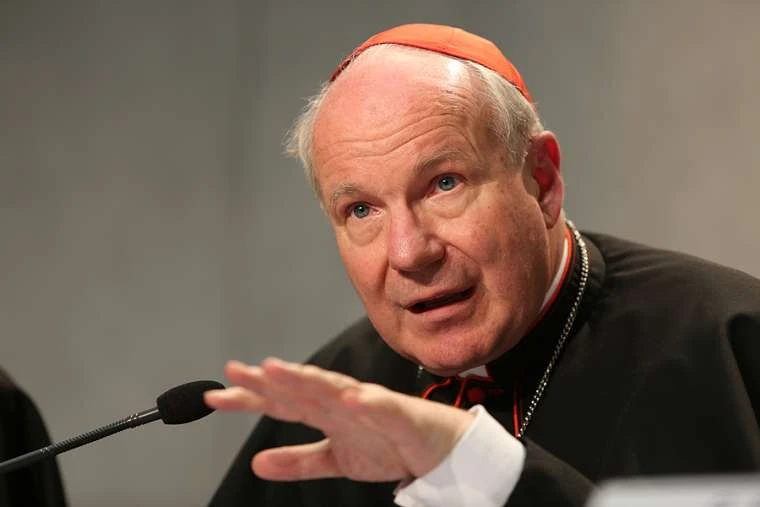
Rome, Italy, May 18, 2017 / 03:04 am (CNA/EWTN News).- At the center of the first joint exhibit between the Vatican Museums and the Jewish museum in Rome is the Magdala Stone, a large decorated stone block from a first century Galilean synagogue which has shed light on synagogue worship before the destruction of the Second Temple.
The Magdala Stone was found during the excavation of an synagogue on the site of what is believed to be Magdala, the hometown of Mary Magdalene. The 4.2 cubic feet limestone block may have been used as a bema, on which the Torah was read.
It is carved on four sides and its top with decorative symbols, most prominently the Menorah which was found in the Jewish Temple – a seven-branch menorah described in Exodus, distinct from the nine-branch menorah associated with Hannukah and the Maccabees.
The stone is the centerpiece of the exhibit “Menorah: Worship, History, and Legend”, shown simultaneously at the Jewish Museum and the Braccio di Carlo Magno Museum in the Vatican, located under the left colonnade in St. Peter’s Square.
The exhibit runs May 15-July 23 and includes roughly 130 pieces, including menorahs from various periods and depictions of them in paintings, sarcophagi, sculptures, and medieval and Renaissance drawings and manuscripts.
This is the first time the Magdala Stone has left Israel or been displayed publicly, and its presence at the Vatican is just “one more sign of the collapsing of the walls between Christianity and Judaism,” in the opinion of Fr. Juan Solana, L.C., General Director of the Magdala Project.
Fr. Solana told CNA that the stone’s presence at the exhibit marks not only an interreligious effort between the Vatican Museums and the Jewish museums in Rome, but also collaboration between Vatican City and the State of Israel.
“I know that it was a lot of work behind the scenes to make it happen,” he explained. “I think it really shows the importance of interreligious dialogue and especially dialogue and friendship between Catholics and Jews.”
Magdala “is very close to Capernaum, in the old area where Jesus preached and taught and performed many miracles,” Fr. Solana said. “So we believe that Jesus went to Magdala and eventually he went to the synagogue and preached there.”
While they can’t know for sure, it is even possible that Christ used the Magdala Stone himself to display scrolls of the Torah.
The town and synagogue were first discovered in 2009 during excavations in preparation for building a Catholic center in Israel. Stalled by the discovery of the site, the Magdala Center, as it is called, is still in the works.
“We found the whole town of Mary Magdalene,” Fr. Solana said; and the cherry on the top, so-to-speak, was the Magdala Stone.
There are seven synagogues known of from the period of Christ's life and more or less 50 years before and after, but in no other synagogue have they found this kind of block, he said.
Archaeologists found a total of three stone blocks in Magdala: one from what was probably a school of the synagogue and one which had been reused as a chair of Moses, the place of authority from which the scribes and Pharisees interpreted the Jewish law. The Magdala Stone was at the center of the synagogue.
The stone is considered important for Judaism because Jewish scholars believe it marks a change within Judaism itself, brought about by the influence of Christianity, Fr. Solana explained.
This is because “Jesus destroyed the idea of the Temple as the center of Judaism,” he said, “and it was confirmed by the destruction of the Temple” in AD 70.
The Magdala Stone and the synagogue both pre-date the destruction of the Temple, which has been confirmed by coins found inside which range from AD 5 to 63 – the time of Christ's life and the first generation of Christians.
Of course, this makes them very important pieces historically, Fr. Solana continued, explaining that the stone itself is a model of the destroyed Temple in Jerusalem. Covered in carvings of Jewish symbols, more even than the Temple itself, it also displays the oldest-known carving of a menorah in Israel.
If you value the news and views Catholic World Report provides, please consider donating to support our efforts. Your contribution will help us continue to make CWR available to all readers worldwide for free, without a subscription. Thank you for your generosity!
Click here for more information on donating to CWR. Click here to sign up for our newsletter.




Leave a Reply